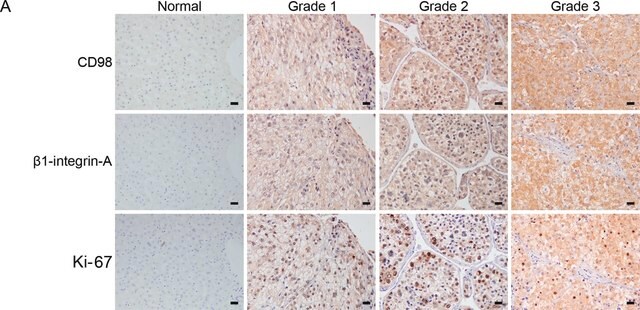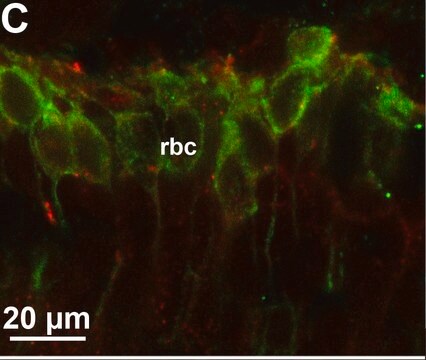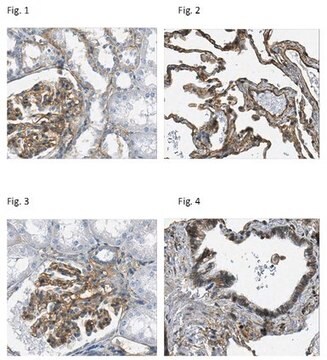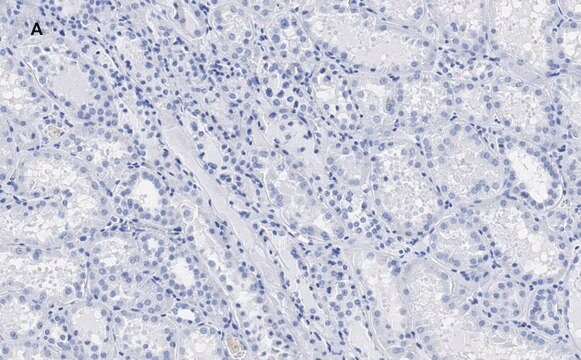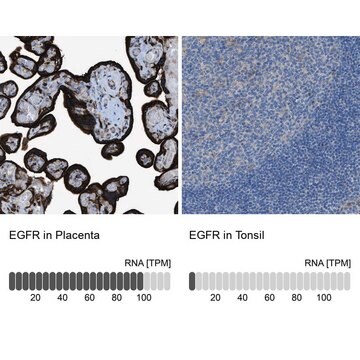MAB1900
Anti-Integrin β1D Antibody, CT cytoplasmic domain, clone 2B1
clone 2B1, Chemicon®, from mouse
Synonyme(s) :
CD29
About This Item
Produits recommandés
Source biologique
mouse
Niveau de qualité
Forme d'anticorps
purified immunoglobulin
Type de produit anticorps
primary antibodies
Clone
2B1, monoclonal
Espèces réactives
canine, human, mouse
Fabricant/nom de marque
Chemicon®
Technique(s)
immunocytochemistry: suitable
immunohistochemistry: suitable
western blot: suitable
Isotype
IgG1
Numéro d'accès NCBI
Numéro d'accès UniProt
Conditions d'expédition
wet ice
Modification post-traductionnelle de la cible
unmodified
Informations sur le gène
human ... ITGB1(3688)
Description générale
Spécificité
Immunogène
Application
Cell Structure
Integrins
Immunocytochemistry:
Immunohistochemistry: 1:25-1:200. Frozen, unfixed tissue sections, post-fixed with 2% PFA after primary and secondary antibody additions {van der Flier, 1997}. Alternatively, 4-7μm cyrosections fixed with cold acetone for 2 minutes and stored at -80°C until used. Airdried sections are rehydrated in PBS prior to use; detection via ABC systems is encouraged.
Optimal working dilutions must be determined by the end user.
Forme physique
Stockage et stabilité
Autres remarques
Informations légales
Clause de non-responsabilité
Vous ne trouvez pas le bon produit ?
Essayez notre Outil de sélection de produits.
En option
Code de la classe de stockage
12 - Non Combustible Liquids
Classe de danger pour l'eau (WGK)
WGK 2
Point d'éclair (°F)
Not applicable
Point d'éclair (°C)
Not applicable
Certificats d'analyse (COA)
Recherchez un Certificats d'analyse (COA) en saisissant le numéro de lot du produit. Les numéros de lot figurent sur l'étiquette du produit après les mots "Lot" ou "Batch".
Déjà en possession de ce produit ?
Retrouvez la documentation relative aux produits que vous avez récemment achetés dans la Bibliothèque de documents.
Notre équipe de scientifiques dispose d'une expérience dans tous les secteurs de la recherche, notamment en sciences de la vie, science des matériaux, synthèse chimique, chromatographie, analyse et dans de nombreux autres domaines..
Contacter notre Service technique